The allure of “Dancing in the Moonlight” is undeniable. Its catchy melody and feel-good vibe have made it a beloved classic for generations. But beyond the surface of this seemingly carefree tune lies a story of resilience, creativity, and finding light in the darkest of times. This article delves into the fascinating history of “Dancing in the Moonlight lyrics” and the man who brought this iconic song to life, Sherman Kelly.
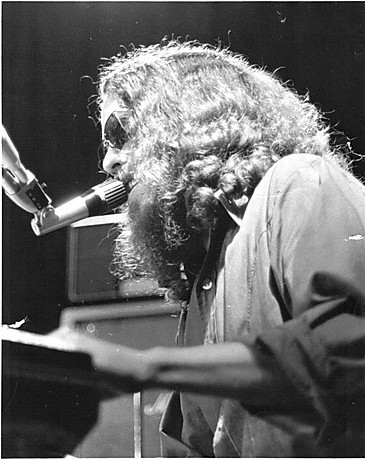 Sherman Kelly onstage in the 1970s. Sherman Kelly performing live during the 1970s, the era when he penned "Dancing in the Moonlight lyrics".
Sherman Kelly onstage in the 1970s. Sherman Kelly performing live during the 1970s, the era when he penned "Dancing in the Moonlight lyrics".
In May 2020, as concert venues remained shrouded in uncertainty due to the global pandemic, many music lovers turned to nostalgia, revisiting the sounds of their favorite artists. For some, like the author of the original article, this meant exploring YouTube videos of bands like Pure Prairie League, Poco, and Orleans. It was during this digital deep dive that the timeless charm of “Dancing in the Moonlight,” particularly the Orleans cover, resurfaced, prompting a deeper exploration into its origins. The journey led to an unexpected discovery: a comment on an Orleans YouTube video by none other than Sherman Kelly himself, the song’s writer. This chance encounter opened the door to the incredible story behind “Dancing in the Moonlight lyrics.”
Sherman Kelly’s tale is far from the idyllic imagery evoked by the song. The genesis of “Dancing in the Moonlight” is rooted in a harrowing experience that occurred in 1969. Kelly, then managing a nightclub in St. Thomas, Virgin Islands, embarked on a day trip to St. Croix with friends on a rented yacht. Unfortunately, seasickness struck Kelly and his girlfriend hard during the voyage.
Upon reaching St. Croix, while his companions sought dinner, Kelly and his girlfriend, still battling seasickness, decided to stay behind. When the group returned to the boat for the night, the sight of the swaying mast was enough to deter the unwell couple from re-boarding. They opted for a night in town. However, in his disoriented state, Kelly had left his wallet on the yacht, leaving them without funds for accommodation.
Seeking shelter, they approached a small innkeeper, explaining their predicament and promising to settle the bill in the morning. The innkeeper’s shocking response was a crude proposition, demanding Kelly’s girlfriend’s compliance in exchange for a room. Rejected at a second inn as well, they faced a difficult choice.
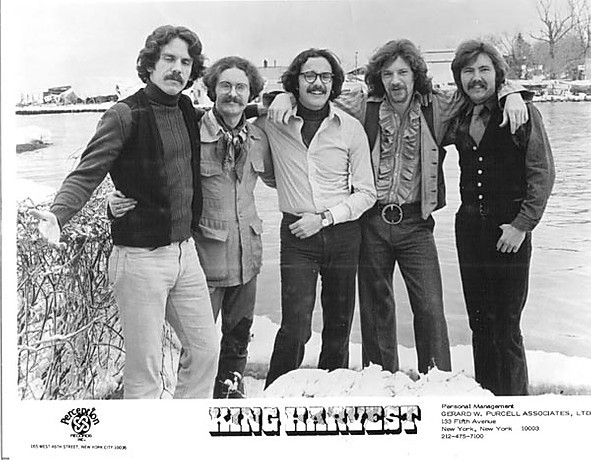 King Harvest in 1972. King Harvest band members in a promotional shot from 1972, the year their rendition of "Dancing in the Moonlight" became a chart-topping hit.
King Harvest in 1972. King Harvest band members in a promotional shot from 1972, the year their rendition of "Dancing in the Moonlight" became a chart-topping hit.
Kelly’s girlfriend, with remarkable composure, suggested they simply spend the night on the beach. “It’s a beautiful night. Why don’t we just stretch out on the beach?” she reasoned. And so they did. But this seemingly romantic decision took a terrifying turn.
What followed was a nightmare. While sleeping on the beach, Kelly and his girlfriend were brutally attacked by a vicious St. Croix street gang. Kelly was mercilessly beaten with baseball bats by five gang members, while his girlfriend was subjected to a horrific assault. In a moment of desperate courage, Kelly regained consciousness and fought back, his resistance and cries for help startling the attackers and causing them to flee.
Severely injured and drifting in and out of consciousness, Kelly and his girlfriend managed to find their way to the island’s hospital. Unbeknownst to them at the time, they were likely among the early victims of the notorious Fountain Valley Gang, who would later terrorize the island and devastate its tourism industry with a mass murder in 1972. Kelly’s condition was critical. He vividly recalls waking up in the hospital to the grim prognosis delivered by doctors discussing his and his roommate’s chances of survival. “‘That’s it, he’s gone,’ said one doctor about the other patient. ‘What about him, you think he’s gonna make it?’ And the other doctor said, ‘No, I doubt it.” Kelly realized, to his horror, they were speaking about him.
Against the odds, Kelly survived. After days in the St. Croix hospital, he returned to St. Thomas to recuperate before eventually making his way back to New York. There, doctors at New York Hospital undertook the arduous task of re-breaking and resetting the fractured bones in his face and addressing his other injuries. Returning to his home in Ithaca, New York, Kelly was still in considerable pain and plagued by constant headaches. While physically unable to perform, his creative spirit remained unbroken.
It was during this period of convalescence, amidst physical and emotional trauma, that the seeds of “Dancing in the Moonlight lyrics” were sown. Kelly envisioned an escape, a “dream of a peaceful and joyous celebration of life,” a stark contrast to the brutal reality he had just endured. The lyrics weren’t born from a moonlit dance, but from a yearning for peace and joy in the aftermath of violence and despair. This traumatic experience, almost fatal, paradoxically gave birth to a song that radiates positivity and escapism. “It was just me imagining a better world than the one I had just experienced in St. Croix,” Kelly explained.
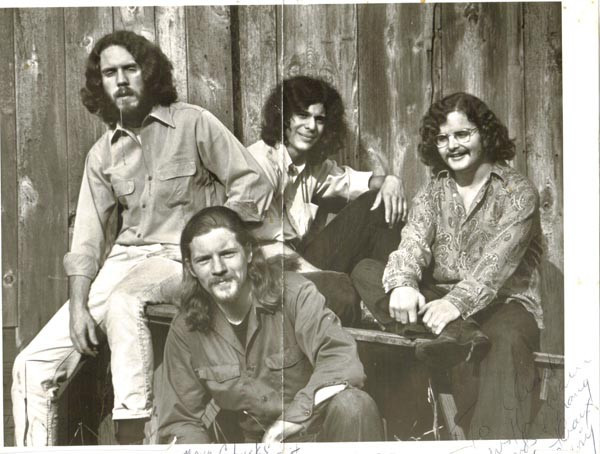 Boffolongo, circa 1970. Boffalongo band photograph from approximately 1970, featuring Sherman Kelly, whose initial band played a regional hit version of "Dancing in the Moonlight".
Boffolongo, circa 1970. Boffalongo band photograph from approximately 1970, featuring Sherman Kelly, whose initial band played a regional hit version of "Dancing in the Moonlight".
The song’s initial reception was overwhelmingly positive. “It was amazing. People liked the song right from the start. I liked it, but I wouldn’t have predicted that it would become a big hit,” Kelly admitted. However, King Harvest wasn’t the first band to record “Dancing in the Moonlight.” In 1970, Kelly joined Boffalongo, a band featuring his brother Wells Kelly, Larry Hoppen, Dave “Doc” Robinson, and Peter Giansante. Boffalongo included “Dancing in the Moonlight” on their 1970 album “Beyond Your Head,” with Sherman Kelly as the lead vocalist. Despite Kelly’s self-deprecating assessment of his vocal performance on this version, Boffalongo achieved regional success with the song. Interestingly, another group named High Broom also recorded and released a version of “Dancing in the Moonlight” in 1970 on Island Records, but it didn’t chart.
When Boffalongo disbanded, Wells Kelly joined King Harvest, a French-American group based in Paris, fronted by former Boffalongo member Doc Robinson. Wells introduced “Dancing in the Moonlight” to King Harvest, leading to their definitive rendition. King Harvest’s version, with Robinson on lead vocals, was released as a single in 1972, with “Lady Come Home” as the B-side. It was this version that propelled “Dancing in the Moonlight lyrics” into mainstream success, reaching No. 10 on the Cash Box Top 100 and No. 13 on the Billboard Hot 100.
In the summer of 1972, as “Dancing in the Moonlight” soared up the charts, King Harvest invited Sherman Kelly to tour with them. During live performances, Robinson handled lead vocals, while Sherman Kelly provided harmonies. Despite experiencing the initial thrill of touring with a hit song, Kelly found the lifestyle unappealing. “Life on the road is ridiculous. I didn’t really care for it after awhile,” he confessed. His tenure with King Harvest was brief, lasting only one tour.
Wells Kelly later left King Harvest and reunited with John Hall and Harvey Brooks, with whom he had played in a band called Thunderfrog in the late 1960s. Together with Larry Hoppen from Boffalongo, they formed Orleans. Orleans also recorded “Dancing in the Moonlight,” further cementing the song’s legacy. The current iteration of Orleans, still featuring John Hall and Larry Hoppen’s brothers, Lance and Lane Hoppen, continues to perform “Dancing in the Moonlight” in their sets, keeping the song alive for new audiences, even after Larry Hoppen’s passing in 2012.
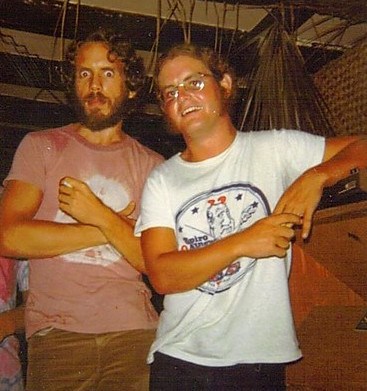 Sherman Kelly, left, and Larry Hoppen, who would go on to form the band Orleans. Sherman Kelly pictured alongside Larry Hoppen, his former bandmate who co-founded Orleans, another band that popularized "Dancing in the Moonlight lyrics".
Sherman Kelly, left, and Larry Hoppen, who would go on to form the band Orleans. Sherman Kelly pictured alongside Larry Hoppen, his former bandmate who co-founded Orleans, another band that popularized "Dancing in the Moonlight lyrics".
Sherman Kelly’s journey took him beyond music after the tragic death of his brother Wells in 1984. He pursued a master’s degree in social work and psychotherapy, working as a psychotherapist for many years until his retirement. However, his musical spirit wasn’t entirely dormant. In 2008, he released “Burnin’ the Candle,” an album featuring unfinished collaborations with his late brother.
The enduring appeal of “Dancing in the Moonlight lyrics” is evident in its numerous covers and appearances in popular culture. Toploader’s 2000 cover became another hit, introducing the song to a new generation. It has also been featured in films, television shows, and video games, including “Guardians of the Galaxy: The Telltale Signs” in 2017.
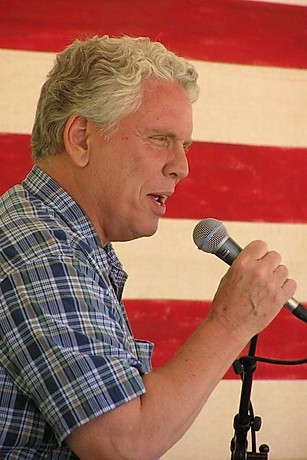 Sherman Kelly today. Sherman Kelly in a recent photograph, reflecting on his enduring musical legacy and the unexpected journey of "Dancing in the Moonlight lyrics".
Sherman Kelly today. Sherman Kelly in a recent photograph, reflecting on his enduring musical legacy and the unexpected journey of "Dancing in the Moonlight lyrics".
From its traumatic origins to its global recognition, “Dancing in the Moonlight lyrics” represents a remarkable story of artistic transformation. Sherman Kelly’s ability to channel a horrific experience into a song that celebrates joy and peace is a testament to the power of music and the resilience of the human spirit. The song’s enduring popularity is not just due to its catchy tune, but also to the underlying message of hope and the dream of a “better world” that resonates deeply with listeners. “Dancing in the Moonlight” is more than just a song; it’s an anthem of hope born from adversity, forever etched in the soundtrack of our lives.

